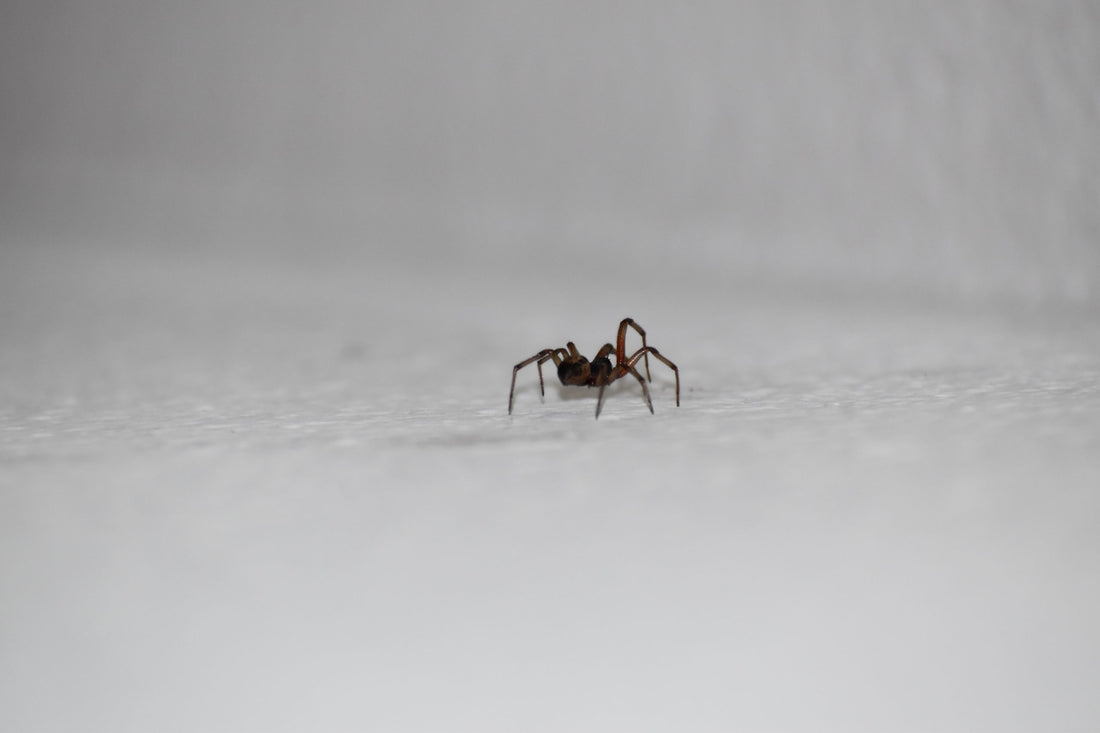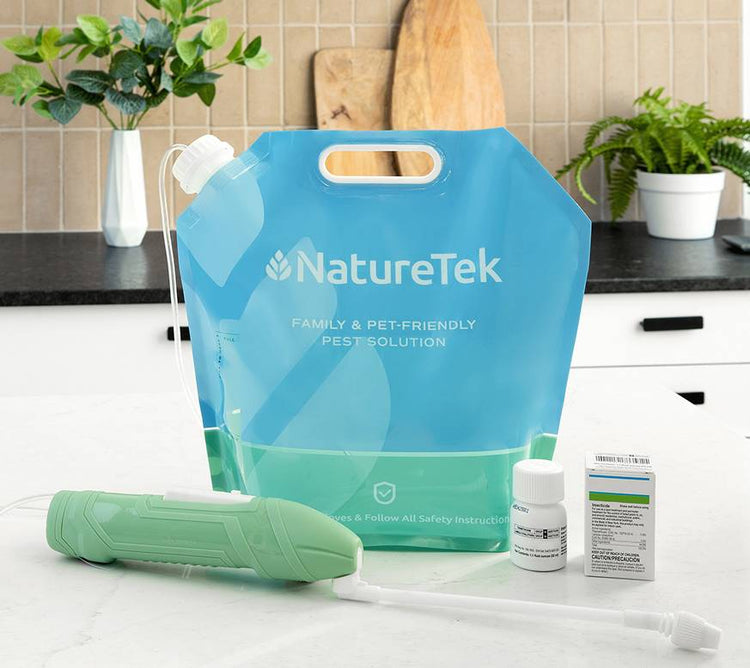
Spiders
Getting Rid of Spiders
Spiders are one of the most common, and in some cases, most dangerous pests in the United States. Whether you’re dealing with unnerving species such as Hobo Spiders, House Spiders or Wolf Spiders, or you are seeking to remove venomous Black Widows or Brown Recluse Spiders, this tutorial will help you solve your problem.
This tutorial was written by a licensed pest control applicator (that’s me, hi!) and utilizes the same practices used by industry experts.
This tutorial uses the NatureTek Pro Kit as the means of treatment. Although not required to follow this guide, we recommend using NatureTek because it includes everything needed to solve spider issues, including the specific pest control products required, as well as the tools & safety equipment needed to apply it. To get a custom pest control kit to get rid of your spiders, click HERE.
1. Prepare to Treat
Make sure you’re wearing a long sleeve shirt, long pants and closed-toe shoes. Use the provided safety gloves whenever handling product. Always follow included product label instructions.
Follow the included directions for mixing the product and attaching the electric spray wand.
2. Treat the Entire Foundation Exterior
Ridding your home of spiders is a process that requires treating thoroughly to remove their sources of food (other insects).
Like with most pests, treating the outside foundation is critical to control. When you spray the foundation, make sure to spray up the wall (2 feet) and away from the wall on the ground as well (1 foot). Make sure to treat the entire foundation all the way around your home so there are no gaps in your barrier for spiders to get through.
3. Remove Webs & Egg Sacks
When dealing with spiders it’s always a good idea to walk around your home and inspect for spider webs or egg sacks (small white or brown pouches that look like cotton balls). They are most often found up high and in cracks of siding, behind shutters, against window seals, in creases of eaves, and in dark cool corners.
Use a broom or brush to completely remove the webs and egg sacks from the structure of the home. You can do this on ornamental bushes and shrubs around the home as well.
If you aren’t able to physically remove all webs or egg sacks, that’s typically okay, these spiders will likely crawl through product or consume another pest that has.
4. Treat Exterior Issues
If there are areas outside that see a lot of spider activity (such as webs in rocks, bushes, etc.) you can spray these broadly on a mist setting. Be sure to avoid spraying on blooming flowers to protect pollinators.
5. Treat Interior Problem Areas
Next, you can treat areas inside the home seeing issues. These are most often cool, damp areas such as basements, but problems can arise in different locations as well. Set your sprayer to a mist setting. You’ll want to focus your treatment along the lower walls, baseboards and in corners for best results.
Most spiders that dwell inside homes are termed “pursuit predators” which means they actively seek out their prey. This is good, it means they are moving around a lot and are more likely to come in contact with our product.
6. Recommended Products for Spiders
For spiders, you need professional grade products the are microencapsulated. These products work much better against larger insects with longer legs. The microencapsulated bubbles are designed to attach to the hair follicles on the legs of spiders as they walk through the treated area. Through self grooming the spider will begin to be effected by the product.
NatureTek kits come with products that have these features and are fantastic at solving any spider issue. To get a pest control kit to solve your spider issues, click the link below.



























































































